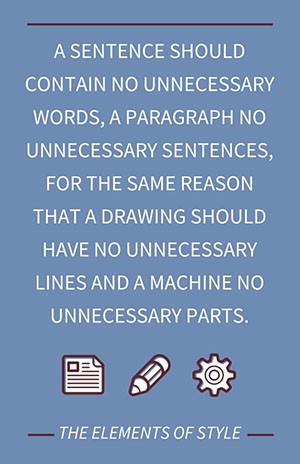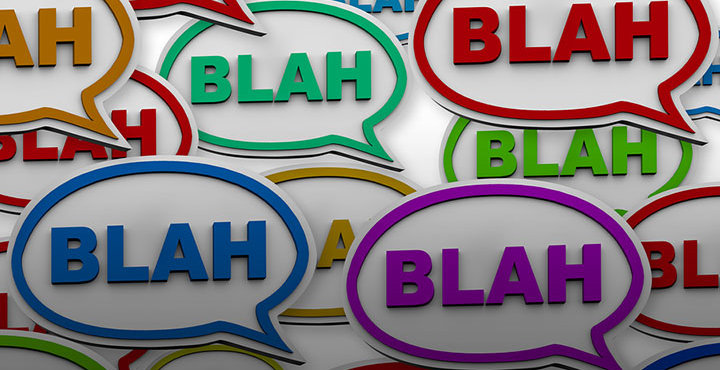Concise writing is an art form every writer should master
Conciseness is using the fewest words possible to clearly convey an idea. The opposite of conciseness is wordiness. Knowing how to write concisely is often considered one of the most important skills for a writer to develop. It shortens the length of your text and makes your writing more efficient. Use the five tips below to edit your work for conciseness.
1. Trim the fat
Your first draft will likely have some "fat," or unnecessary words and phrases that weigh down your text. Remove these useless parts whenever possible. The following words and phrases often constitute "fat" in writing: very, just, type, due to the fact that, actually, at this moment in time, and so forth.
2. Eliminate redundancies
If you use more than one word, phrase, sentence, or paragraph to convey the same information without further clarifying the main point, eliminate all but the best one. Writing concisely and removing redundant information requires having one strong example instead several weak ones that compete for attention. The following is an example of removing redundancies:
Redundant: Multiple instances of red herrings being seen in the lake water were reported several times all day yesterday.
Efficient: Red herrings were seen in the lake several times yesterday.
Removing redundant words and phrases will not only make your writing more concise, but easier to read.
3. Avoid the pomp
Outside of poetry, flowery and eloquent words are rarely useful when writing clearly and concisely. Your reader should never have to stop and reach for a dictionary to understand you. The following is an example of pomp-filled writing:
Pomp: We made such a grandiloquent verbal exodus from the gathering that everyone in our immediate proximity was agog, their mouths fluctuating and trilling in surprise.
Simple: Our parting comments left everyone at the party speechless and surprised.
4. Check your adjectives and adverbs
Be concise, but keep the adjectives and adverbs that give your writing impact and clarity. It's important to know the difference between these valuable language elements and ones that distract from your point. This is illustrated in the following example:
Bad Details: The very large man, in the black leather vest with long hair, who lives in the house next to me, drove his motorcycle in front of my house very loudly.
Good Details: My neighbor, a giant biker, roared his Harley past my house.
Good details illustrate a story using a few vivid words rather than many vague ones.
5. Stay on point
The tips above all illustrate ways to make your writing clear and concise. However, you may stray from your central point while writing. While professional editors will look for irrelevant tangents, it is important that you keep to the main ideas when writing.
It takes time to develop the skill of writing concisely. If you are patient and practice, it will become an ingrained habit. Copy editing will help you hone your skills, and enlisting the help of a professional editor can help you trim the fat even further.
Enhancing your own editing skills can greatly affect how you communicate to your readers.




